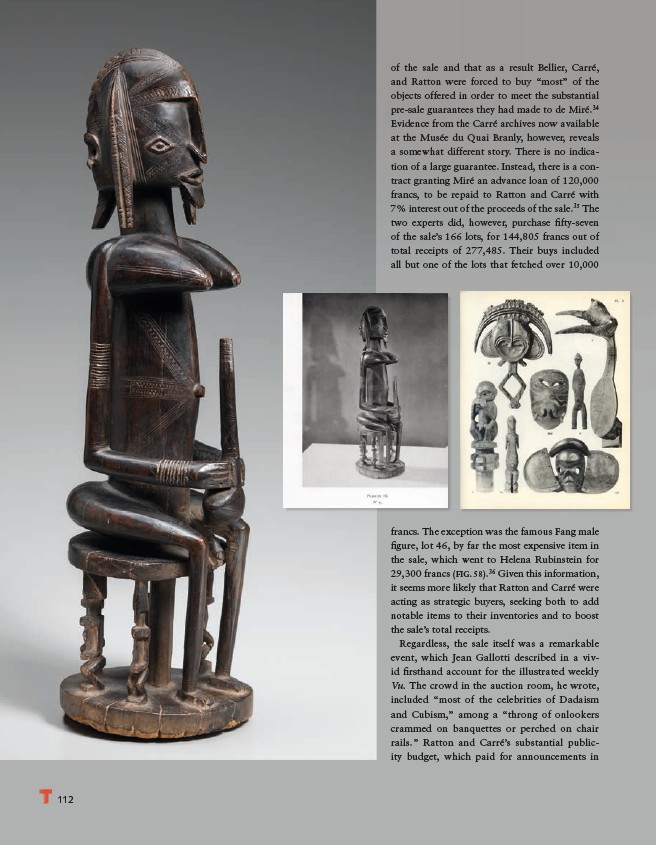
112
of the sale and that as a result Bellier, Carré,
and Ratton were forced to buy “most” of the
objects offered in order to meet the substantial
pre-sale guarantees they had made to de Miré.34
Evidence from the Carré archives now available
at the Musée du Quai Branly, however, reveals
a somewhat different story. There is no indication
of a large guarantee. Instead, there is a contract
granting Miré an advance loan of 120,000
francs, to be repaid to Ratton and Carré with
7% interest out of the proceeds of the sale.35 The
two experts did, however, purchase fi fty-seven
of the sale’s 166 lots, for 144,805 francs out of
total receipts of 277,485. Their buys included
all but one of the lots that fetched over 10,000
francs. The exception was the famous Fang male
fi gure, lot 46, by far the most expensive item in
the sale, which went to Helena Rubinstein for
29,300 francs (FIG. 58).36 Given this information,
it seems more likely that Ratton and Carré were
acting as strategic buyers, seeking both to add
notable items to their inventories and to boost
the sale’s total receipts.
Regardless, the sale itself was a remarkable
event, which Jean Gallotti described in a vivid
fi rsthand account for the illustrated weekly
Vu. The crowd in the auction room, he wrote,
included “most of the celebrities of Dadaism
and Cubism,” among a “throng of onlookers
crammed on banquettes or perched on chair
rails.” Ratton and Carré’s substantial publicity
budget, which paid for announcements in